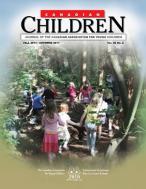Princesses in the Classroom: Young Children Learning to be Human in a Gendered World
Abstract
For well over fifty years, girls as princesses has been a staple of child-hood play. In 2000, The Disney Corporation released its "Princesses" line of merchandise - - eight princess-es marketed together as a group for the purpose of creating a single brand which can be more easily mass-pro-duced. As such, the princess industry has grown significantly in the last ten years. This paper explores the heavily marketed princess motif on the devel-opment of gender identity in young girls. The messages of simplistic and traditional, hyper-gendered perfor-mances are powerful and ubiquitous, and such fixations need not be encouraged in primary classrooms. Primary teachers in particular could use alternative and varied metaphors for gender roles when choosing books, stories, and learning activities for their classrooms, and they can cre-ate space for critical discussions regarding young children's percep-tions of gender roles. Because chil-dren appropriate cultural material to participate in and explore their world, mindful engagements with their teachers seem necessary.Downloads
Copyright (c) 2011 Allyson Jule

This work is licensed under a Creative Commons Attribution-NonCommercial 4.0 International License.
Authors contributing to the Journal of Childhood Studies agree to release their articles under the Creative Commons Attribution-Noncommercial 4.0 International license. This licence allows anyone to share their work (copy, distribute, transmit) and to adapt it for non-commercial purposes provided that appropriate attribution is given, and that in the event of reuse or distribution, the terms of this license are made clear.
Authors retain copyright of their work and grant the journal right of first publication.
Authors are able to enter into separate, additional contractual arrangements for the non-exclusive distribution of the journal's published version of the work (e.g., post it to an institutional repository or publish it in a book), with an acknowledgement of its initial publication in this journal.






